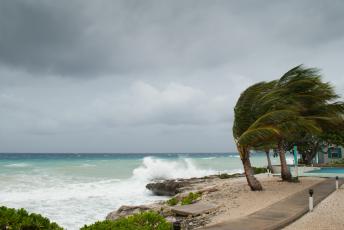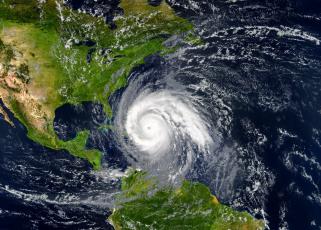As we approach the 2022 hurricane season, experts are predicting yet another severe year, with some saying it will compare to last year. No one knows how accurate these predictions will be, but we can look back at last year’s forecast and compare them to what actually happened to see just how accurate the experts were.
This time last year, the National Oceanic and Atmospheric Administration (NOAA) called for 13-20 named storms and 6-10 hurricanes in the Atlantic, with 3-5 turning into major hurricanes (hurricanes of category 3 strength or stronger). Today we know the 2021 hurricane season produced 21 named storms, exhausting the season’s designated 21-name list of storms, and was the third most active Atlantic hurricane season on record, as well as the third costliest, with storm damage totaling more than $80 billion.
The 2021 hurricane season was remarkable in another way, too. The traditional hurricane season begins on June 1 and ends on November 30. Hurricanes, however, aren’t known for honoring tradition, and the first storm of the 2021 season formed on May 22 with Tropical Storm Ana.
When the first named storm will form this year, we don’t know, but one thing is certain, our refining and petrochemical manufacturers are ready to adjust their operations to withstand it. They have established, and regularly enhance, their hurricane preparedness plans to do whatever needs to be done to keep everyone safe — from making sure that resources are where they need to be in the event of supply disruptions; to maintaining regular communications and coordination with governments at the local, state and federal levels; to ensuring that our employees and surrounding communities have the supplies they need.
Our member companies develop comprehensive emergency preparedness plans, conduct regular drills based on those plans, and participate in strategic government exercises to improve and streamline a coordinated emergency response. Working through AFPM, they participate in the Oil & Gas Sector Coordinating Council and the Chemical Sector Coordinating Council — partnerships between private industry and the Federal government — to share and disseminate real-time information.
All these actions put us in a good position to meet whatever may come. So, if the experts are right with their 2022 predictions of 16-20 named storms — 6-8 becoming hurricanes and 3-5 major hurricanes — we stand ready to ensure that our people, facilities and the communities and environment that surround us, remain safe.
Click here for AFPM’s hurricane preparedness resources.

